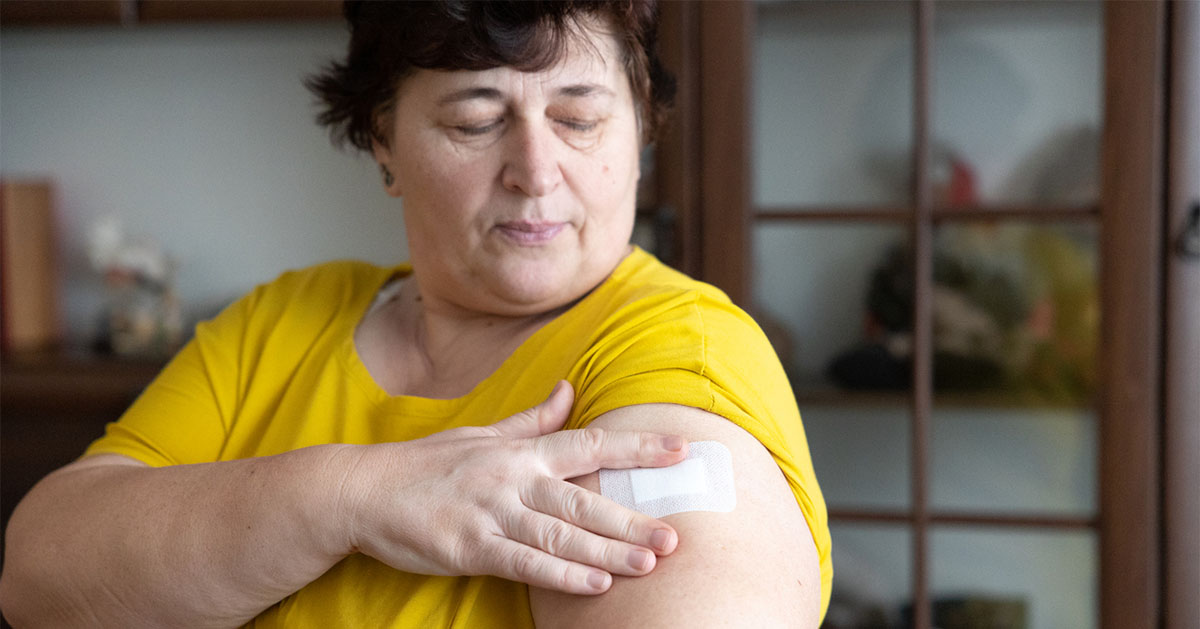For people with diabetes, obesity is a strong predictor of heart disease and mortality. Metabolic handling of glucose improves in 80% of those who intentionally lose weight and mortality is reduced by 25% (Aucott et al, 2004). Low levels of physical activity are independently associated with a wide range of chronic illnesses (including poor diabetes outcomes) and mortality (Khaw et al, 2006). This is relevant, as increasing physical activity can also help to generate or maintain weight loss (Haskell et al, 2007).
Fortunately, both obesity and physical activity are modifiable risk factors. Large randomised controlled trials (RCTs) have shown that relatively modest changes in lifestyle (for example, achieving 30 minutes per day of moderate physical activity and reducing weight by 5%) can reduce the risk of progression to type 2 diabetes in adults with impaired glucose regulation by around 50% (Gillies et al, 2007). Effective interventions also modify cardiovascular risk factors (metabolic syndrome, weight and blood pressure) (Stevens et al, 2001; Esposito et al, 2004). Consequently, promoting changes in diet and physical activity is recommended in national and international guidelines as a first-line therapy for preventing type 2 diabetes (Paulweber et al, 2010) and as an essential component of structured diabetes education programmes (American Association of Diabetes Educators, 2009; NICE, 2009).
Unfortunately, the most successful lifestyle interventions used to-date are resource intensive and are considered to be too expensive for use in large-scale prevention programmes in primary care (Heneghan et al, 2006; Lauritzen et al, 2007). Furthermore, there is no clear consensus about which types of intervention are best suited for managing obesity in primary care.
Motivational interviewing
One approach to behaviour change that has an increasing evidence base to support its use is motivational interviewing (MI). MI uses a person-centred counselling style and other counselling techniques (Box 1) to establish a positive rapport with the individual (using techniques for encouraging empathy and reducing resistance) and to explore an individual’s motivations (using techniques to identify and resolve ambivalence and perceiving reasons both for and against change).
MI also encourages intrinsic motivation (having one’s own personal reasons for change rather than “doing it for someone else”) and explores confidence about change by identifying possible barriers to change and possible solutions, as well as formulating specific action plans. MI has been used for a number of conditions in primary care such as alcohol misuse and smoking cessation (Martins and McNeil, 2009).
Evidence on motivational interviewing
A number of descriptive reviews and meta-analyses have evaluated the use of MI for promoting healthy diet and physical activity. A representative selection of these is described below.
A meta-analysis by Burke et al (2003) identified four RCTs of MI interventions, involving 832 participants, which targeted change in either diet or physical activity or both. The analysis showed that motivational interviewing produced moderate to strong effects at 12–18 weeks of follow-up, compared with either a placebo treatment or usual care. However, there may be some bias here due to the pooling of heterogeneous outcomes and the inclusion of self-reported outcomes (Janz, 2006).
A meta-analysis and systematic review by Rubak et al (2005) identified eight RCTs of MI interventions, involving 1140 participants, which targeted change in diet or physical activity or both. The analysis showed that MI outperformed usual GP care, at least in the short-term (3–12 months), reducing BMI by a mean 0.72 kg/m2 (95% confidence interval [CI], 0.33–1.11), cholesterol by 0.27 mmol/L (95% CI, 0.20–0.34) and systolic blood pressure by 4.22 mmHg (95% CI, 0.23–8.99). This review also reported that interventions with a higher contact time with participants (≥60 minutes) were more likely to be effective than interventions of lower intensity. This review provides convincing data that clinically meaningful changes in weight and other objective health outcomes are possible with MI-based interventions.
Evidence for MI in primary care settings
Several studies have demonstrated at least short-term success of MI in a primary care setting. These have used dietitians, physical activity specialists, health visitors and non-NHS staff to deliver the interventions. Harland et al (1999) found that, at 3 months of follow-up, an MI-based intervention (six MI sessions and leisure centre vouchers), produced significant increases in physical activity in 55% of recipients, versus 16% of those in the control group. However, these short-term increases in physical activity were not maintained at 1 year of follow-up.
An RCT by Greaves et al (2008), of MI in 141 people with a BMI of ≥28 kg/m2, used non-NHS staff (postgraduate exercise science students and ex-nurses). The intervention involved a median of eight sessions (mean 4.5 hours contact time). In the intervention group, 24% achieved a weight loss of 5% or more, compared with 7% in the usual care control group (odds ratio [OR], 4.0; 95% CI, 1.4–11.4). The proportion achieving 150 minutes or more of moderate physical activity was 38% in the intervention group, compared with 21% in the control group (this was not statistically significant).
Hardcastle et al (2008) conducted a similar RCT in 334 people with increased cardiovascular risk. The intervention group received a median of two MI sessions (mean 60 minutes contact time) with a dietitian or a physical activity specialist. At 6 months, the intervention group had a significantly lower BMI (–0.36 kg/m2) and blood pressure (–2.5 mmHg diastolic) than controls and more people in the intervention group (55% vs 42%) achieved 150 minutes or more of moderate physical activity per week (P=0.005). Those who attended more counselling sessions had significantly greater beneficial changes in body weight, overall physical activity, total cholesterol, HDL-cholesterol, and triglycerides (Hardcastle et al, 2008).
Estimated costs for the above MI interventions ranged from £47 per person (Hardcastle et al, 2008) to £263 per person, which compares favourably with pharmaceutical approaches to weight loss (Greaves et al, 2008).
Strengths and weaknesses of using MI
Motivational interviewing offers a coherent set of techniques to support behaviour change, which is person-centred, can be taught in 2–4 days and has an available network of accredited trainers such as the Motivational Interviewing Network of Trainers (MINT; for more information, see http://motivationalinterview.org/training/trainers.html). It can also be used by a range of different providers, has demonstrated “real world” short-term effectiveness in primary care and other settings, and can be applied with relatively low monetary cost and low use of healthcare personnel resources.
Against this, there is a need to consider that long-term effectiveness has not been demonstrated and the research data only relate to people who volunteered for intervention studies (around 30% of those eligible). Additionally, although it can help a substantial proportion (25–30%), the majority of people still do not succeed in making lifestyle changes. Furthermore, there is no direct evidence as yet of the cost-effectiveness of MI for promoting weight loss or increased physical activity.
Notwithstanding the above pros and cons, the science of supporting behaviour change is still developing and there may be ways to improve the basic effectiveness of MI by using different delivery methods or by combining it with changes in practice systems that help to support any changes made. A discussion of possibilities for delivery of MI-based interventions in primary care now follows.
Delivering MI interventions in primary care
When planning an MI-based intervention for use in primary care, there are several considerations that may enhance its effectiveness.
It is worth investing in high-quality MI training, and using the MINT to find trainers is a good starting point. However, evidence suggests that a simple 2-day training course is not sufficient to change ingrained practices (Miller et al, 2004). Hence, there is a need to monitor and supervise rigorously at the outset, using formative feedback on the first six–eight MIs to ensure that intervention integrity is maintained (Moyers et al, 2005). This can be arranged by recording interviews and sending them to an experienced MI trainer for individualised formative feedback. Opportunities to discuss cases with experienced supervisors may also be helpful for new delivery staff.
More needs to be done to support the maintenance as well as the motivation of behaviour change. Hence, it may be worth seeking further training both for MI delivery staff, and any other professionals who may see the recipient regularly, on how to use specific techniques to support the maintenance stage (self-monitoring, relapse prevention techniques, engaging social support, identifying barriers to change and solutions and goal review), as it would help to foster longer-term behaviour change (Bandura, 2005). A Chartered Health Psychologist may be able to help with this kind of further training.
Based on the authors’ previous work (Wingham et al, 2006; Evans et al, 2007; 2008; Paulweber et al, 2010), other enhancements to practice systems that would support lifestyle change might include:
- Systematic diagnosis or risk identification (Hippisley-Cox et al, 2008; Department of Health, 2009).
- Referral systems and care pathways.
- Regular monitoring (and recording in the practice record) of progress.
- Providing feedback on changes in risk factors and the health benefits of changes made when the person is seen in routine care.
- Discussing ways to overcome barriers to achieving goals.
- Encouraging individuals to engage social support (especially family support) for planned lifestyle changes.
GP practices might also use IT systems to improve implementation of appropriate care pathways for supporting lifestyle change. This might involve the recording of “at-risk” cases and treatments offered in disease registries, producing graphical displays of risk to aid risk communication (Edwards et al, 2002), scheduling periodic follow-up and flagging actions needed to other healthcare professionals.
Care pathways are also needed for people who do not succeed with MI-based approaches. This might include (for those who want further support) more intensive behavioural interventions, pharmaceutical support, or bariatric surgery (NICE and the National Collaborating Centre for Primary Care, 2006).
Possible models for delivery in primary care include those by nurses, health visitors or other primary care staff (healthcare assistants, for example) and external delivery by leisure centre or weight-loss industry staff commissioned by health funders, or by staff employed by PCTs in the UK, such as health trainers, or other health promotion workers.
The physical activity care pathway announced by the Department of Health in 2009 (Foster et al, 2009) provides a detailed model for delivery of advice on increasing physical activity and brief MI-based intervention in primary care. This includes training materials, quality assurance standards and implementation methods. This model could be extended to include counselling for weight loss as well as physical activity promotion.
Conclusion
MI seems a promising basis on which to build interventions for managing obesity in primary care. It is possible to generate clinically meaningful effects on weight and physical activity using MI with a range of different providers. It is worth noting, however, that only around 25–30% of participants currently achieve clinically meaningful benefits. Furthermore, there is some doubt about whether initial changes can be maintained and it is important to establish this before widespread implementation can be recommended.
Suggestions have been provided for practitioners using or developing MI-based interventions with regard to enhancing initial effectiveness, using additional intervention components to support behaviour maintenance and organising their practice systems or primary care teams to support the intervention.
Acknowledgements
The authors would like to acknowledge the help of Dr Sarah Hardcastle and Professor Adrian Taylor for their comments and opinions.





Increased risk of new-onset heart failure in over-65s suggests caution is required before prescribing pregabalin for painful diabetic neuropathy.
14 Aug 2025